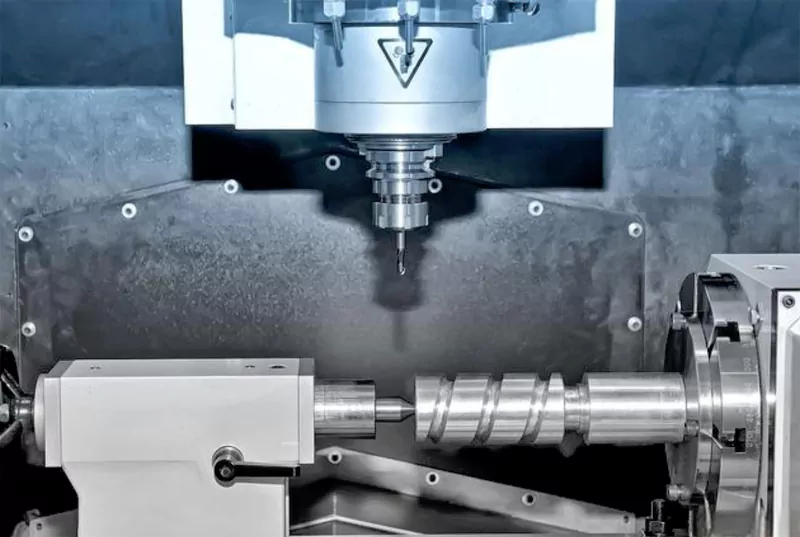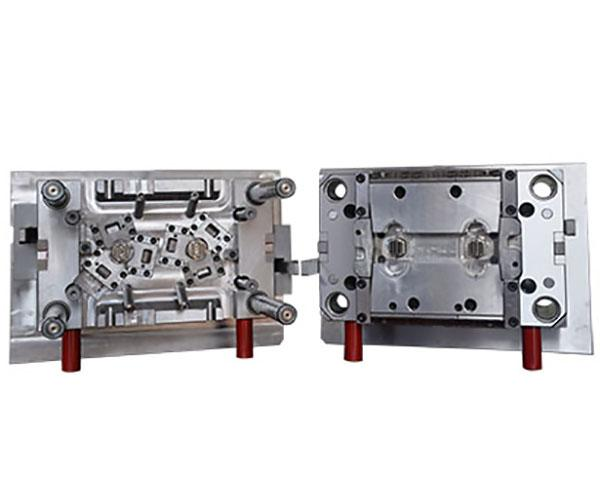In modern manufacturing, precision machining has become an important process to achieve high-quality, high-precision products. Whether in the fields of aerospace, medical equipment, or electronic equipment, precision machining plays a vital role. This technology not only meets stringent requirements for extremely tight tolerances but also significantly improves product performance and reliability. This article will explore precision machining, highlighting its advantages and applications across industries to help readers understand its importance in modern manufacturing.

What is precision machining?
Precision machining uses high-precision equipment and processes to achieve micron- or nanometer-level accuracy, shape precision, and surface quality, far surpassing traditional methods.
Precision machining process
1. Grinding process
Using abrasive tools to grind the workpiece surface can achieve high-precision alow-surfaceace roughness processing results. For example, when manufacturing high-precision ball screws, grinding is an essential process. In recent years, with the continuous development of grinding technology, such as high-speed grinding, ultra-precision grinding, etc., grinding accuracy and efficiency have been significantly improved. High-speed grinding can achieve high material removal rates, while ultra-precision grinding can achieve nanometer-level surface roughness.
2. Electrical discharge machining
The high temperature generated by discharge is used to etch away metal materials and is suitable for processing workpieces with complex shapes and high-hardness materials. Often used for fine structure processing in mold manufacturing. The latest EDM technologies, such as micro-EDM and powder-mixed EDM, further expand its application range. Micro-EDM can create microstructures at the micron or even nano-scale, while powder-mixed EDM can improve surface quality and processing accuracy.
3. Laser processing
The use of high-energy-density laser beams to cut, drill, and weld materials has the advantages of high precision, high speed, and non-contact processing. In the electronics industry, laser processing is often used to create tiny circuit boards. At present, laser processing technology continues to innovate, such as ultra-fast laser processing, laser composite processing, etc. Ultra-fast laser processing can achieve ultra-fine processing effects and has unique advantages in processing brittle materials and high-hardness materials. Laser composite processing combines laser with other processing methods to improve processing efficiency and quality.

4. Electrochemical processing
Based on the principle of electrolysis to remove the workpiece material, there is no mechanical cutting force during the processing, and no residual stress or deformation will be generated. In the aerospace field, it is often used to process thin-walled and complex-shaped parts. The latest research shows that by optimizing the process parameters and electrolyte formula of electrolytic machining, the machining accuracy and surface quality can be significantly improved.
5. Ion beam processing
Using ion beams to remove or implant modifications of workpieces by sputtering can achieve nanometer-level processing accuracy. In semiconductor manufacturing, ion beam processing is used to create the microstructure of chips. With the advancement of technology, the beam stability and controllability of ion beam processing have been continuously improved, making it possible to achieve higher-precision processing g.
6. Ultrasonic processing
Material removal is achieved by using ultrasonic vibration tools to impact the surface of the workpiece in an abrasive liquid medium. Especially suitable for processing hard and brittle materials, such as ceramics, glass, etc. New ultrasonic processing technology has made breakthroughs in tool design and vibration system optimization, improving processing efficiency and accuracy.
7. Milling processing
Milling is the cutting of workpieces by rotating multi-edged tools. In precision milling, high-precision milling machines, advanced cutting to, ols, and optimized cutting parameters are used to achieve high-precision processing of flat surfaces, curved sure, faces, and complex contours. For example, in mold manufacturing, precision milling is often used to machine the cavities and cores of molds. In recent years, the development of five-axis simultaneous milling technology has enabled the processing of more complex shapes and improved the efficiency and accuracy of processing. At the same time, micro-milling technology plays an important role in the manufacturing of micro parts and can process micron-level feature sizes.

Advantages of precision machining
1. Improve product quality
It is possible to manufacture parts with higher precision and better surface quality, thereby improving product performance and reliability. For example, in the aerospace field, precision-machined parts can reduce drag during flight and improve fuel efficiency. At the same time, precision machining can ensure the matching accuracy between parts, reduce the risk of wear and failure, and extend the service life of the product. In the field of medical devices, high-precision instrument components can improve the accuracy and safety of diagnosis and treatment.
2. Enhance product competitiveness
High-precision products can meet the market demand for high-quality, high-performance products and enhance the competitiveness of enterprises in the market. As consumers’ requirements for product quality and performance continue to increase, companies with precision machining capabilities can stand out in the market. For example, in the smartphone industry, high-precision components can provide a smoother operating experience and better imaging effects, making products more advantageous in a highly competitive market.

3. Reduce production costs
Although the initial investment in precision machining equipment and processes is high, production costs can be reduced in long-term operations by reducing scrap rates and improving production efficiency. Precision machining can accurately control machining allowances and reduce material waste. At the same time, high-precision machining can reduce subsequent finishing and debugging work and shorten the production cycle. For example, in automobile manufacturing, precision-machined engine parts can improve engine combustion efficiency and reduce fuel consumption, thereby reducing the cost of vehicle use.
4. Promote innovative design
High-precision manufacturing capabilities provide greater space for innovative product design. Designers can no longer be restricted by traditional machining processes and boldly conceive and implement more complex and optimized product structures and functions. For example, in the design of battery packs for new energy vehicles, precision machining can create more compact and efficient heat dissipation structures and improve battery performance and safety.
5. Promote industrial upgrading
The development and application of precision machining technology can drive the upgrading and transformation of the entire industrial chain. It not only promotes progress in related equipment manufacturing, tool research and development, process optimization, and other fields but also promotes collaborative innovation between upstream and downstream industries to form a more competitive industrial cluster.
6. Adapt to personalized needs
In today’s era of increasingly popular personalized consumption, precision machining can meet the needs of small-batch and diversified production, providing enterprises with a flexible production model. For example, the manufacturing of customized jewelry, high-end sports equipment, and other products cannot be separated from the support of precision machining technology.
Application of precision machining
1. Aerospace
The manufacture of aircraft engine blades, spacecraft parts, etc. requires extremely high precision and quality. Turbine blades in aircraft engines must withstand high temperature, pressure, and speed, with their shape and surface accuracy directly impacting engine performance and reliability. Precision machining ensures precise airfoils and smooth surfaces, reducing airflow losses and improving efficiency. In spacecraft manufacturing, parts like satellite antennas and solar panel brackets require high dimensional accuracy and stability for reliable operation in space.

2. Automobile industry
Manufacture key components such as cylinder blocks and crankshafts of automobile engines to improve automobile performance and fuel economy. Nowadays, with the automobile industry’s pursuit of energy conservation, emission reduction, and high performance, precision machining is increasingly used in automobile manufacturing. For example, precision-machined engine injectors can achieve more accurate fuel injection, improve combustion efficiency, and reduce exhaust emissions. In the field of electric vehicles, precision-machined motor rotors and stators are essential for improving the efficiency and power density of motors.
3. Electronics industry
Manufacture precision electronic components such as integrated circuit chips and microsensors. Precision machining processes like lithography and etching have advanced, enabling higher chip integration and stronger performance. Microsensors, such as pressure and acceleration sensors, rely on precision machining to create tiny structures for high-precision detection and control in electronic equipment.
4. Medical devices
Manufacture high-precision medical equipment such as artificial joints and pacemakers. The surface accuracy and matching degree of artificial joints directly affect the comfort and rehabilitation effect of patients. Precision machining can ensure that the size and shape of the joints perfectly match the patient’s bones. The tiny electronic components and fine structures in pacemakers also rely on precision machining technology to ensure their stable and reliable operation.
5. Optical instruments
Manufacture high-precision optical components such as lenses and reflectors. In the fields of astronomical telescopes, microscopes, laser communications, etc., the accuracy of optical components has a decisive influence on the imaging quality and optical signal transmission. Through precision grinding, polishing, and coating processes, components with extremely high surface flatness and optical performance can be manufactured.
6. Mold manufacturing
Manufactured various injection molds, stamping molds, etc., to provide high-precision molding tools for large-scale production. The accuracy of the mold directly determines the dimensional accuracy and surface quality of the product. Precision machining technology can manufacture complex shapes and high-precision molds to meet the product requirements of different industries.

7. Energy field
Used to manufacture wind turbine blades, solar papanelsJames, and other parts. In wind power generation, the shape and surface accuracy of the blades affect the efficiency of wind energy capture. The accuracy of the solar panel frame is related to the installation stability and power generation efficiency of the panels.
The application field of precision machining is still expanding. With the advancement of technology, it will also play an important role in emerging fields such as quantum computing and biomedical engineering.
The importance of precision in modern machining
1. Ensuring Efficient Operation of Mechanical Equipment
Precision is vital to the proper functioning and high performance of mechanical equipment. For instance, in machine tool manufacturing, only when each component meets the required precision can the machine tool achieve high-precision processing. High-precision ball screws and guide rails reduce motion errors, enhancing machine tool positioning accuracy and repeatability, allowing parts to meet design specifications. Similarly, in automobile engines, the accuracy of piston-cylinder matching and crankshaft balance directly impacts engine performance, fuel efficiency, and reliability.
2. Meeting the Demands of Emerging Fields
The continuous advancement of technology has raised precision requirements across many emerging fields, such as nanotechnology and biomedicine. In nanotechnology, the creation of nanoscale devices requires extremely precise manufacturing methods, like material deposition and etching control for nanosensors. In biomedicine, the precision of manufacturing artificial organs and implantable devices is critical to ensure compatibility with human tissues, avoiding rejection and improving treatment outcomes.
3. Enhancing Product Consistency and Stability
Improved precision ensures consistency and stability in mass production. Even small deviations in accuracy can lead to product quality inconsistencies. High-precision machining guarantees that the size and performance of each part remain within specified ranges, improving overall product quality and reliability.

4. Boosting Competitiveness in the Market
Precision is a key factor in strengthening a company’s competitiveness in the manufacturing sector. In the global market, businesses that offer high-precision products are often able to secure more orders and expand their market share. High-precision products not only meet stringent customer quality demands but also help establish a strong brand reputation for the company y.
5. Driving Technological Progress and Innovation
The drive for improved precision fosters innovation within mechanical processing technologies. Achieving higher precision requires continuous advancement in processing equipment, tools, methods, and inspection techniques, contributing to the overall technological progression of the industry.
6. A Catalyst for Industry Development
As a crucial aspect of modern manufacturing, the ongoing development and innovation in precision machining offer opportunities and challenges for various industries. To meet market demands and drive industry progress, company, es, and research institutions must continue investing in precision machining technology.
Conclusion
Precision machining technology has occupied a pivotal position in modern manufacturing with its excellent machining accuracy and diversified process means. From aerospace to medical devices, the application of precision machining has penetrated all walks of life. By continuously optimizing processes and introducing advanced technologies, precision machining has not only significantly improved product quality and production efficiency, but also promoted the development of high-end manufacturing. In the future, with the continuous advancement of technology, precision machining will demonstrate its irreplaceable value in more fields and make greater contributions to industrial innovation and economic growth.
